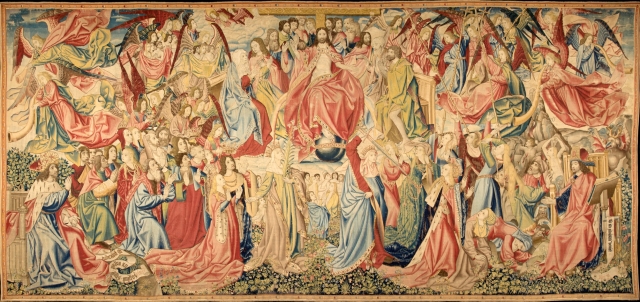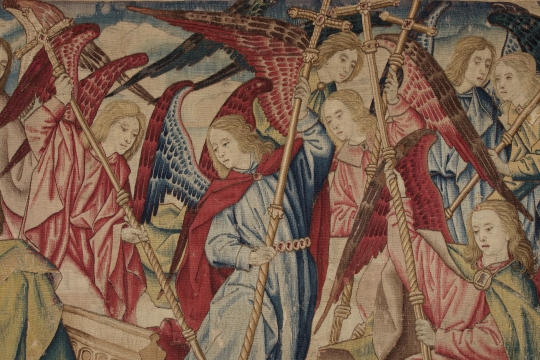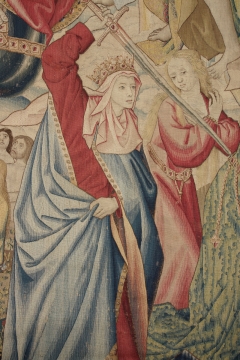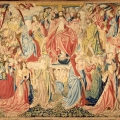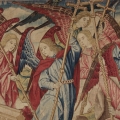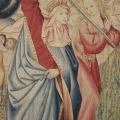The Brussels tapestry Le Jugement Dernier from the Worcester Art Museum (USA) has been able to be restored thanks to the René and Karin Jonckheere Fund. The tapestry is on show at the MRAH before being returned to Worcester.
The tapestry Le Jugement Dernier (The Last Judgement) is the last in a series of ten pieces that illustrate the Mystery of the Redemption of Mankind through the incarnation and death of Jesus Christ. The story is told through a suite of vast compositions that originally measured 80 metres in length and had a public function of decorating the streets when important events relating to royalty or the Church (royal visits and processions) were held, or included as a sign of wealth in the sumptuous decoration of cathedrals and palaces. The history of the world, from the Creation of Adam to the Last Judgement, is richly illustrated through moral allegories and in this particular work by the battle between Vice and Virtue.
The tapestry bears no particular mark of identification, but its style is indicative of work in Brussels during the 1500s. Most of the cartoons can be attributed to the painter Colyn de Coter, who prolonged the stylistic heritage of Van der Weyden and managed a vast workshop in Brussels. The dense composition, from which emanates an impression of horror vacui, and the search for expressive effects through faces and monsters are also evident in the signed works of Colyn de Coter.
The weaving is meticulous and the harmony of the colours has been highlighted thanks to the restoration work conducted by the De Wit workshop and financed by the Jonckheere Fund. Progressive cleaning through aerosol suction has endowed the composition with a clarity of reading of the spatial volumes, the facial forms and details of the clothing and flowers. Following the essential work of consolidation, restoration itself was undertaken. The latter was limited to treating previous unsightly restoration work and to integrating lacunas of shape and the most disturbing colours in perception of the work. In the final stage, the tapestry was lined with linen and given a system enabling it to be hung without stretching the fabric of the tapestry.
The aim of the René and Karin Jonckheere is to save moveable cultural heritage and in particular to support the conservation and restoration of works of art that bear witness to the European dimension of Brussels. The fund is addressed in priority to any public institution in Brussels that has works of art relating to the European heritage of Brussels, but the fund may also support projects relating to works kept in museums and libraries elsewhere. Such was the case for the restoration of the Jugement Dernier tapestry kept at the Worcester Art Museum in the United States.
